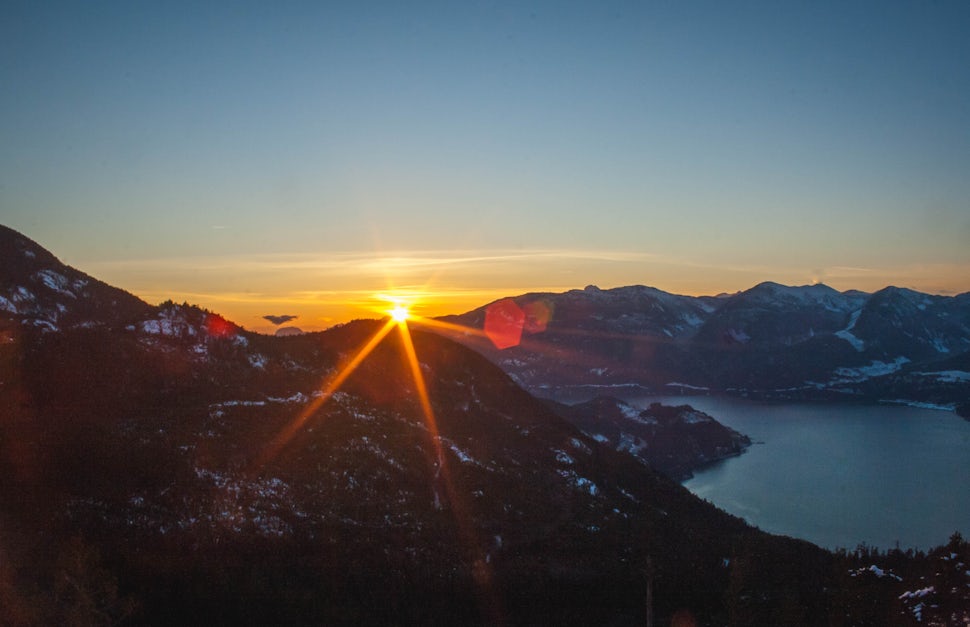The Golden Rules of National Parks (and Why They Matter)
Think before you act: here are some of the consequences of breaking important park rules.

The National Parks Service has been witness to a lot of rule-breaking issues over the past year. From tourists trampling off trail to taking off with wildlife, rules are still a problem for many. But besides the aggravation of getting a pricey ticket, Parks Service rules do indeed serve an important purpose: often with a focus on conservation. With the current enviro-political climate, and the rapid decline of biodiversity all over the world, perhaps with a deeper understanding of the possible detriment of our actions, we can more easily make better choices on the trail. Proper park use is better for both our pockets and our planet. Let’s take a look at some of the most commonly broken rules, and why they matter.
Going off Trail
Wandering off trail is taking a step into the unknown. But, while bypassing the beaten path means more adventure, it can also mean more damage to fragile ecosystems. Off-trailing is restricted/illegal in many areas, and for good reason. The bottom line? Trails limit human impact, especially in fragile areas. They concentrate damaging use to one place, where it can be maintained and planned for. Let’s take a look at some park areas and the impact of human traffic on them:
- Alpine meadows
- Alpine meadows grow in cold, dry, and windy environments. Though this may make the plant life there sound hardier, the tundra is actually very fragile. Repeated footsteps can destroy or kill plants, which then leaves soil exposed, and recovery could take hundreds of years.
- Desert environments (Canyonlands)
- Plants in desertous environments are super fragile because they get so little water. Every last drop of moisture in these areas is utilized, and the plants are rigid and crustaceous. One boot print can last a lifetime in these areas.
- Cryptobiotic Soil: this delicate soil can take years to come back when trampled on, and it is vital to desert ecosystems.
The good news? Going off trail is not always banned in National or Regional Parks. Take the Dinosaur National Monument in Colorado for example: with proper knowledge and preparedness of the area, hikers are encouraged to go off trail and enjoy the remote country. Much of the US federal public land is also available for off-trail use too (check the rules before you go). When going into permitted off-trail areas, always use Leave No Trace ethics, and try to follow game trails to avoid trampling any sensitive areas. Route creation and finding are also often necessary in these areas, so be prepared before you go.
Feeding the Animals: “A Fed Bear is a Dead Bear”
Though tempting, feeding animals is dangerous for humans and animals alike. Here’s why:
- Comfort can kill.
Feeding animals can increase their comfortability around humans, which causes a whole slough of problems. First, it can lead to an increase in aggression around people. Animals who are commonly fed in campsites and other highly populated areas will continually increase their bravado, which can be a safety threat, and eventuate in the execution of the animal.
Animals may also become dependent on human feeding, taking the wild out of our wilderness. Dependency can lead to hordes of animals crowding roads and highways, which can also lead to an increase of spread of disease, as they may not otherwise be found in large groups. How’s that for a snowball effect?
- People food ≠ Critter food
It’s no surprise that, just like cats and dogs, wild animals are not meant to be eating human food. Human foods do not provide the nutrition an animal needs to sustain itself. Along with this, new deformities and diseases are caused by improper nutrition caused by human feeding in animals.
Live-Bait No-No
Fishers coming to National Parks are often surprised that live bait is banned across the board. The reason? Most lakes, ponds, and other fishing spots are highly fragile ecosystems, where equilibrium can be easily disturbed. This often comes in the form of invasive species, who often outcompete other species, overtaking entire lake environments with ease when introduced to their non-native habitat. In line with invasive species, new diseases can also be introduced when using live bait.
Always remember: rules are there for a reason. Do your research, understand your impacts, and lead by example when out in the wilderness! Let’s keep our wilderness wild for the future generations of all organisms.
Are there rules that were missed that you care about? Share your thoughts in the comments below!
We want to acknowledge and thank the past, present, and future generations of all Native Nations and Indigenous Peoples whose ancestral lands we travel, explore, and play on. Always practice Leave No Trace ethics on your adventures and follow local regulations. Please explore responsibly!
Do you love the outdoors?
Yep, us too. That's why we send you the best local adventures, stories, and expert advice, right to your inbox.







